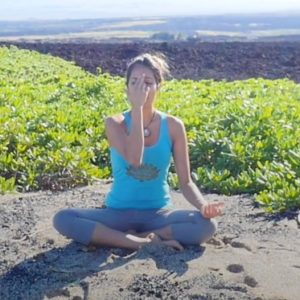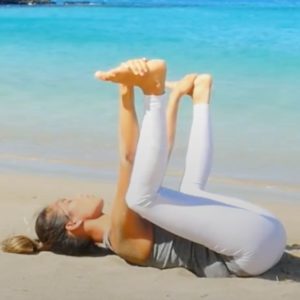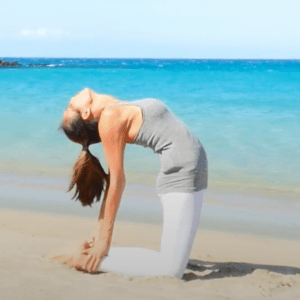Two poses for today are Head to knee forward bend and Reclining Twist
Head to knee forward bend and Reclining Twist
Head to knee forward bend
Head-to-Knee Pose (Janu Sirsasana) is an excellent stretch to relieve tight hamstrings, the muscles in the back of your thighs. If you tend to dislike doing a seated forward bend with both legs straight, this pose may come as a pleasant surprise. Taking your stretch one leg at a time allows you to go a lot deeper and feels so much better.
Steps
Begin sitting in Staff Pose (Dandasana) with both legs outstretched in front of you.
- Adjust the flesh under your seat so that your sit bones are firmly anchored.
- Bend your left knee and bring the sole of your left foot to your right inner thigh.
- Square your torso over your extended right leg. Begin to bring your torso down to your leg by tipping your pelvis forward so that the bend initiates from your hips instead of your lower back.
- Keep your right foot flexed while pressing the back of the right thigh down toward the floor.
- When you reach your maximum forward bending limit, you have a choice: You can maintain your straight spine and long neck in an active position, or you can relax your heart and head down toward the extended leg, allowing the spine to round. Do whichever one feels better.
- If your hands reach your foot, hold your foot. If not, you may hold on to your ankle or calf, or place your hands on the floor wherever they reach.
- On each inhale, extend the spine long. On each exhale, deepen the forward bend.
- Stay here for five to 10 breaths and then straighten both legs, shake them out, and repeat the pose on the other side.
Benefits
- Head-to-Knee Pose stretches the hamstrings, hips, and groin muscles.
- Runners and those who engage in sports that require running will often benefit from this good stretch for tight hamstrings.
- It is also a restorative pose that is said to help relieve stress and calm your mind.
Reclining Twist Yoga Pose
The Reclining Twist Yoga Pose tones the spinal column and removes stiffness of the spine and shoulders. It also helps stimulate the large intestines and elimination. Reclining Twist Yoga is a great pose to take after a long-standing asana practice and back extensions.
Steps
- Lying on your back, draw both knees into your chest. Open your arms to the side like wings and drop the knees to one side.
- Directing the knees lower, or higher will affect where in the spine the stretch is felt. If the knees are higher, this moves the twist to the upper back; lowering the knees moves the twist more to the lumbar/sacrum.
- For a deeper twist, draw one knee into the chest and, holding that knee with the opposite hand, draw it across the body. Rock back and forth a few times, but try to keep the shoulder blades flat on the floor. If the shoulder is off the floor, place a bolster under the bent knee(s).
- If the shoulder is still floating, place a blanket under the shoulder or a bolster along the spine.
- Experiment with the head-turning your head to either side and notice how the sensations change.
- The hand alongside the ear can be resting on the floor or on a bolster.
- Try the Twisted Roots pose with knees crossed as in eagle pose (Garudasana).
- Placing the top leg straight out to the side applies the most leverage, which helps to keep the hips fully turned. For some, it’s less of a twist and more of a stretch to the outside of the leg and hip: great for the IT band. The deepest version of this option is to hold the foot with the opposite hand.
- Slowly roll onto your back and hug the knees into the chest to release the sacrum and lumbar.
Benefits
- Twisting the spine stimulates the Urinary Bladder lines along the spine
- If one arm is overhead, several meridians in the arms are stimulated – the Heart, Lung, and Small Intestines.
- Twists compress the stomach and massage the internal organs. Twisting through the rib cage stimulates the Gall Bladder meridians.
- Helps the liver, spleen, and pancreas
- Nurtures the shoulder joint and upper spine, as well as all the tissues in the upper chest, breast, and shoulder.
- When the knee is at 90 degrees or less, the lower spine, especially the lumbar and sacroiliac joints are stressed.




